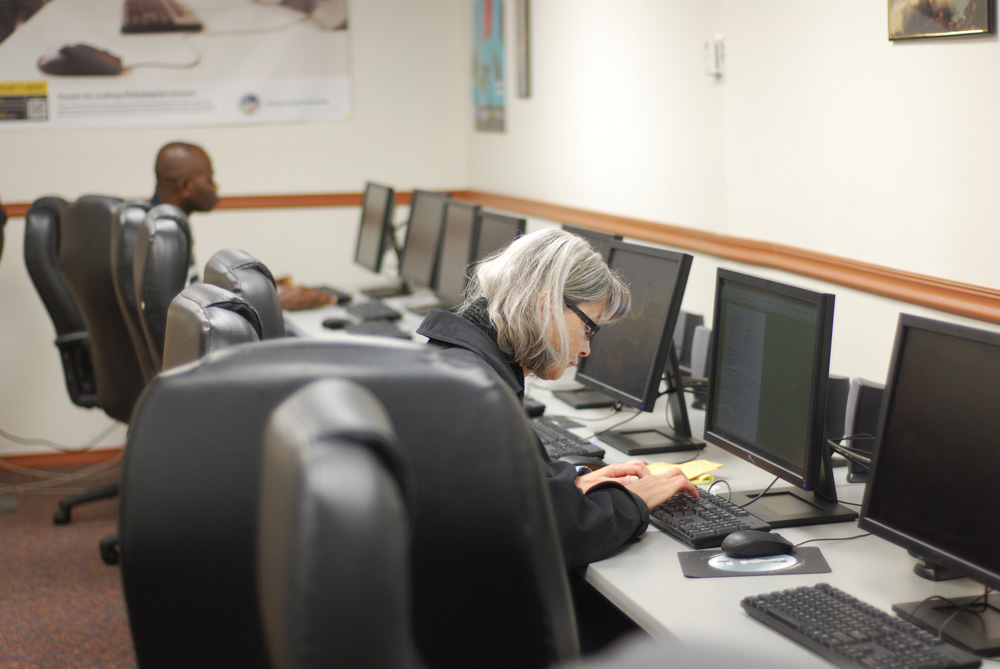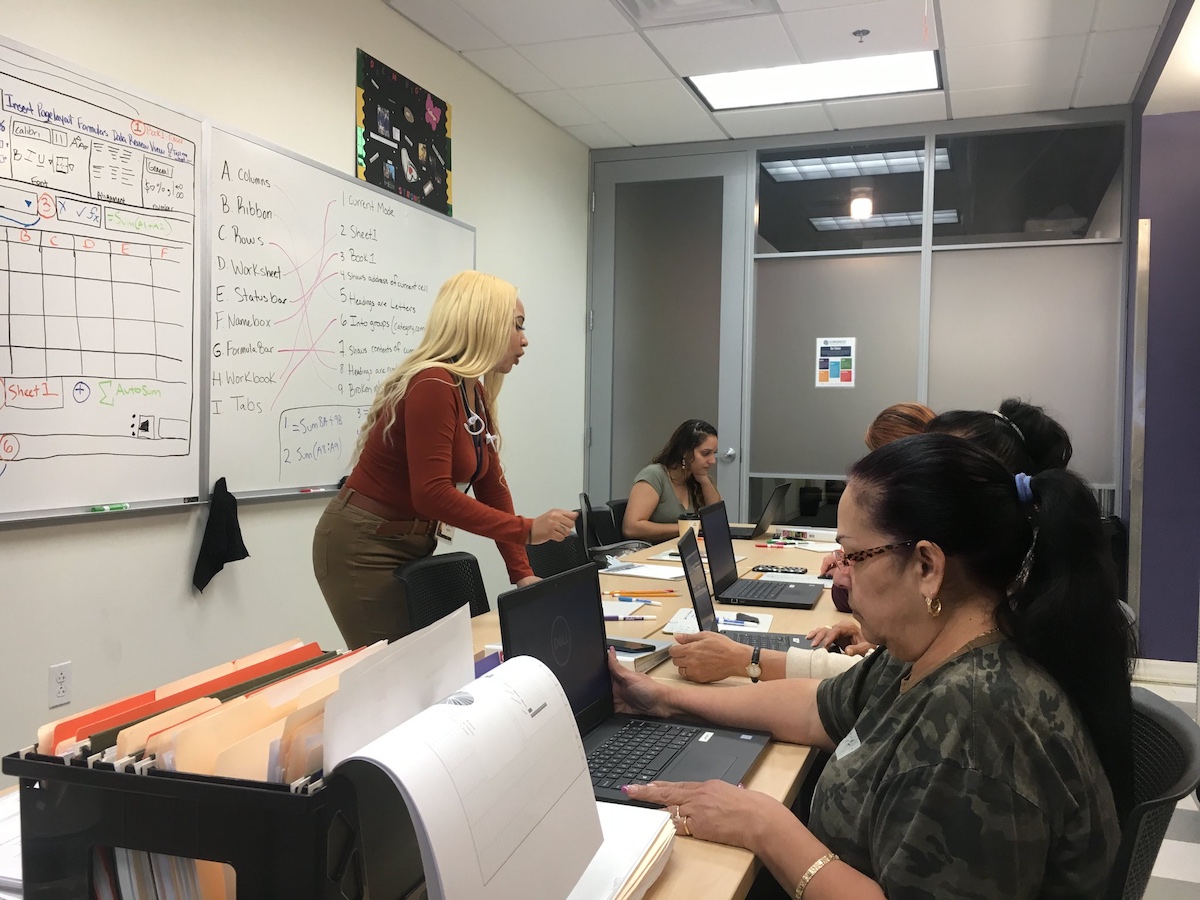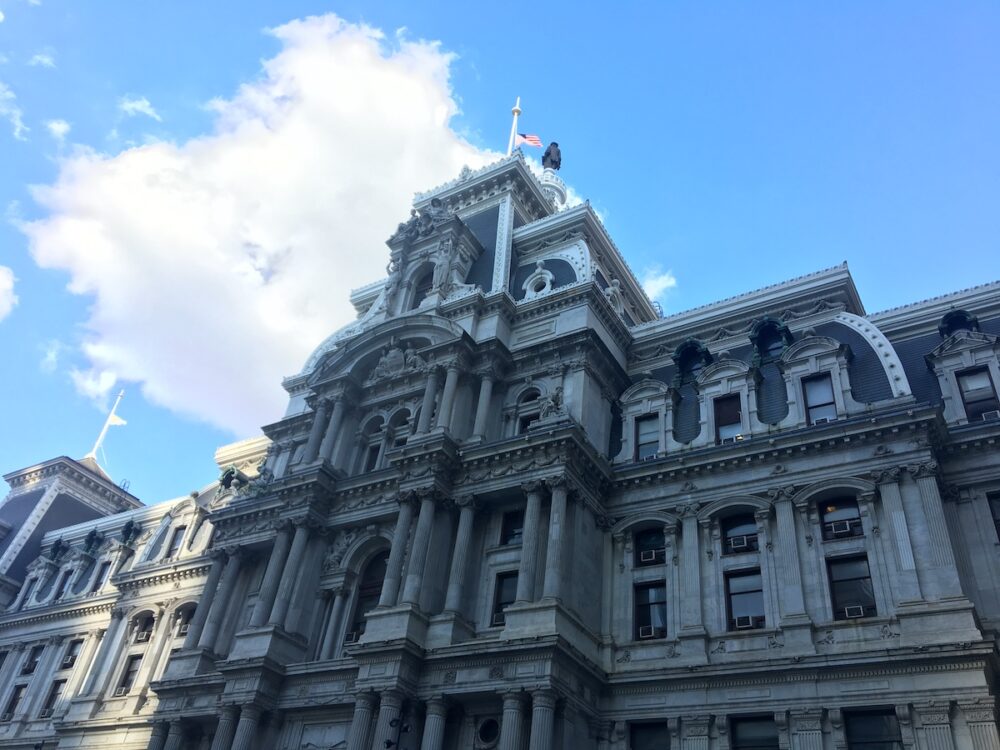The City of Philadelphia’s history-making internet access project aimed to construct the largest municipal Wi-Fi grid in the United States, especially designed to connect low-income residents. Led under the vision of former Mayor John F. Street, the Wireless Philadelphia launch was massive, unprecedented and the boldest attempt of a major city to address the digital divide across an entire cityscape and provide a viable remedy.
Arguably ahead of its time, Wireless Philadelphia was ultimately unsuccessful when Earthlink, the company that won the bid to build and run the network, pulled out of the project in 2008. But the legacy of this initiative was that Philadelphia was one of the first major cities to announce to the world that affordable broadband was not only critical to the economic development of its citizens but that cities and community anchors should be at the forefront of creating digital equity and addressing infrastructure and digital technology gaps within communities.
And that was the start of the digital equity movement in Philadelphia.
The history of digital equity in Philadelphia
In the same year of the decline of Wireless Philadelphia, a milestone report commissioned by the Knight Foundation and published in the city’s Philadelphia 2035 Comprehensive Plan revealed that 41% of Philadelphians lacked access to broadband. It was the first notable study that took a deep dive into assessing internet access within neighborhoods and it was the report that ushered in the first monumental wave of digital equity initiatives in Philadelphia.
It was fortuitous that a year later, Technical.ly was fully launched and soon after, presented its now-iconic Philly Tech Week in 2011 during the Nutter administration.
At that first Philly Tech Week, two significant events occurred that helped shape and put digital equity in Philadelphia on the map:
First, Philly Tech Week celebrated and highlighted the city’s largest collaborative digital equity effort called the Philadelphia “Freedom Rings,” which was a citywide broadband initiative funded from President Obama’s 2010 Broadband Technology Opportunities program (BTOP) and the National Telecommunications and Information Administration (NTIA).
Second, Wilco received public acknowledgment of its seminal but somewhat hidden leadership role central in creating the Freedom Rings historic mix of key Philadelphia community anchor institutions, organizations and public-private entities that have served vulnerable populations for years.

The Freedom Rings was initially led by Wilco, Drexel University, the Philadelphia Housing Authority (PHA), the Urban Affairs Coalition and the Community College of Philadelphia, and eventually submitted a three-pronged grant proposal totaling up to approximately $45 million for BTOP programs. Funding requests included a middle mile fiber ring proposal to provide broadband to PHA communities and anchor institutions (led by Wilco), a comprehensive broadband and digital literacy skills collaborative (led by Wilco, Urban Affairs Coalition, Philadelphia Housing Authority, Drexel and CCP), and the use of city recreation centers (led by the Office of Innovation and Technology and PHA)
In the end, only two of the three grants were funded, amidst a debacle of co-competing infrastructure grants. Of those grants awarded, the funding focused primarily on broadband adoption programming and the creation and improvement of a handful of public computer centers. It is important to note that despite the panoply of BTOP middle-mile fiber infrastructure applications submitted, not one was funded. Which was unfortunate, because any one of those infrastructure applications would have been instrumental in starting to close the gap of the homes that comprised the 41% lacking in broadband at that time.
It was Technical.ly that documented and reported the most information during those years of the BTOP grants. Within one of those articles, it was reported that although Wilco fared well and led the region in receiving high marks and favorable state recommendations to the National Telecommunications and Information Administration to receive federal infrastructure funding, all fiber applications were cut from consideration. In retrospect, there are still many probable reasons why the actual broadband access needed for individual homes was not considered fundable under BTOP and NTIA: existing fiber in the city, too many competing applications and organizations not working together, large providers lobbying against those applications to not receive funding.

Nonetheless, it was the second-largest missed opportunity since Wireless Philadelphia for the city to chart its future in operating a fiber-backed broadband network. More notably, it was a missed opportunity for the city to have made history and supported a trusted African American telecommunications operator who had historically served low income communities, to lead the city’s effort of providing the necessary hi-speed broadband services needed for those communities to thrive.
Despite it all, the impact and importance of the 2009 BTOP grants and subsequent digital initiatives to come afterwards, were instrumental in the city launching its network of public computing centers later rebranded and called KEYSPOTS. And those KEYSPOTS, provided the next great moment of the digital equity movement in Philadelphia. The BTOP programs and KEYSPOTS were pivotal to chipping away at the 41% and those programs and centers enabled thousands of Philadelphians to access internet, obtain working devices or receive digital literacy training that started narrowing the gap of digital access across the city for little over a decade.
Present-day state of digital equity
It was the onset of the COVID-19 pandemic that most significantly magnified the persisting challenges of the digital divide, not only in Philadelphia, but in cities across the country. The pandemic exposed that our most vulnerable and underserved communities are still without affordable, sustainable, high-speed internet access. The pandemic also reignited a rallying cry to the leadership of the nation that if there ever was a time for the internet to be legislatively designated not only as a public utility (a necessity to modern life and critical daily life resources), but also viewed as a civil right (an essential component of democracy), it was now.
In 2021, Philadelphia took the next pivotal steps to address digital inequities by issuing the Connecting Philadelphia: 2021 Household Internet Assessment Survey, which was commissioned and funded by the Mayor’s Fund under Major James Kenney and the Office of Innovation and Technology. The report was led and conducted by Wilco and Wilco’s strategic partners, which included the Centri Tech Foundation and national broadband expert John Horrigan. This assessment not only provided a new benchmark that measured the progress of the last decade of broadband programs and discount connectivity programs, including the impactful Comcast’s Internet Essentials, T-Mobile’s Project 10Million, federal government’s Emergency Broadband Benefit, and PHLConnectED, but the study also provided data on how residents navigated the economic impacts of the pandemic to get online.
It is important to note that during the pandemic, Philadelphia was one of the only cities in the nation that invested in and conducted a study of this kind. The assessment was historic because it filled the necessary knowledge gaps about the city’s status on the digital divide and highlighted that Philadelphia has progressed and narrowed the gap: 84% of Philadelphia homes now have access to high-speed internet.
Yet that progress was still tenuous. What the study also exposed was that even though broadband access is available — meaning the city does not lack in fiber connectivity or the infrastructure available for broadband access — 32% of Philadelphia households are still “subscription vulnerable.”
In Philadelphia, “subscription vulnerability” means a few things:
- There are still a large number of households and residents that find it hard to maintain service without assistance or discount programs.
- Subscription vulnerable households are more likely to be African Americans, Hispanics, aging seniors and families with K-12 children.
- Despite the many miles of fiber sprawling underground or on poles, the ability to purchase and benefit from access to high-speed affordable broadband critical to the future of receiving modern telehealth, remote education and technology-driven workforce programs, is lacking, especially in underserved minority communities in Philadelphia.
Ultimately this assessment, similar to the report issued back in 2008, set forth a call to action that focused on the need for cities, states and the federal government to continue support for broadband discount programs, to take advantage of opportunities coming through federal and state funding, and to develop and share citywide digital equity plans that address the inequities of affordability; digital literacy and support; housing insecurity; and language, cultural and racial barriers.

In perfect timing, off the heels of the 2021 assessment, a few new pivotal digital equity “moments in the movement” occurred in the nation and in Philadelphia:
- The Biden administration signed a $1 trillion bipartisan infrastructure bill into law. That bill provided $42 billion for wiring underserved communities and created a $14.2 billion Affordable Connectivity Program to provide a $30 monthly discount to qualifying low-income households.
- In 2022, the city unveiled its comprehensive Digital Equity Plan that is the roadmap to how Philadelphia will overcome the digital divide focusing on four strategic goals: devices, connectivity, training and workforce and ecosystem.
- In 2023, the Community College of Philadelphia (CCP), was one of the few recipients of a $3 million Connecting Minority Communities Grant, again issued under the Biden administration and the Department of Commerce. The Connecting Minority Communities Pilot Program will provide increased access to affordable 5G wireless mesh broadband services, workforce development training, and technological resources to residents initially located in West Philadelphia. The partners to the pilot include, CCP, WILCO, PCs for People and Bloc Power. Note: CCP was the only educational institution in the CMC program that received funding to offer affordable services to surrounding communities, and not just the intuition itself.
The future of digital equity
At this timely commemoration of Technical.ly’s 15th anniversary, there is more than ever before the need for local and national news outlets to continue to document, report, and fully inform the public on all things digital equity.
Because as a nation, we are at a hinge moment in the movement of digital equity.
Over the past several years, the federal government has allocated an unprecedented amount of funding for digital equity and broadband. However, all of these programs are now being met with challenges.
The extraordinary gains of President Biden’s Affordable Connectivity Program are now in jeopardy of running out of funding despite the data showing that 20 million eligible families across the nation have finally found affordable options to connect to remote work, distance learning, health care, and for greater connections to family members and society. And although broadband is considered a nonpartisan issue, as of Feb. 8, 2024, the program has frozen and halted any new applications for ACP funding going forward.
The historic Broadband Equity and Deployment (BEAD) program, which provided $42.5 billion to expand high-speed internet access by funding and planning infrastructure deployment and adoption programs across the nation, will probably exclude cities like Philadelphia for funding. In Pennsylvania, the Shapiro administration announced that the state will receive $1.16 billion in BEAD funding to expand affordable high-speed internet across the Commonwealth.

However, according to BEAD requirements and the varying politics within state authorities tasked to administer funding, Philadelphia and many other similarly situated urban cities, will more than likely not be included in considerations under BEAD. If this happens, it would be a missed opportunity for Philadelphia to receive federal dollars that could dramatically assist minority and low-income communities to receive the necessary high-speed affordable modern resources to enable future modern telehealth, remote work opportunities and technology-driven workforce training.
And history was just recently made in Philadelphia, when the city elected Cherelle Parker as its 100th mayor, the first woman to hold the position. However, she enters office with a multiplicity of challenges to tackle in order for Philadelphia to become the safest, cleanest and greenest city in America. Undoubtedly, Mayor Parker will also have to deal with a statistic issued back in 2012 through a report commissioned and funded by IBM and City of Philadelphia, that says by 2030, an estimated 600,000 Philadelphians will lack basic skills needed to work in a technology-inclusive, if not exclusive, economy.
So, we are at a critical moment here in Philadelphia. And how it plays out will not only dictate the future of Philadelphia’s digital economy, but will determine who gets to participate and how much it will cost city gov and its citizens to do so.
But one thing that I know about our city is that when we absolutely have to, we can rise to the occasion.
Remember what we accomplished when we pitched to Amazon to make Philadelphia its next great headquarter location? Despite Philadelphia not being selected, the Amazon H2Q pitch became one of the best collaborative campaigns we have ever embarked on. We came together across all different sectors disciples, education, and business, in rapid fashion, for a common cause. The video alone was a veritable who’s who and truly reflective of the most impactful leaders of the Philadelphia at that time.
In like fashion, in order to fully address and close the digital divide, we will have to come together again. The need to test and pilot innovative models that bring together shared resources, and are reflective of the diverse businesses, talent and strengths of our city, will be key.
We are seeing in real time that we can not depend solely on government or large incumbent providers to solve for sustainable and future proof broadband services. We will have to think differently. We will have to be collaborative. We will have to be inclusive. And will have to share and make space for new solutions that can bring greater digital equity and broadband to our citizens.
Ultimately, that’s what it will take to close the gaps and become, as newly elected Mayor Parker has touted, “One Philly, a United City.”
Let’s get to work, Philadelphia.







